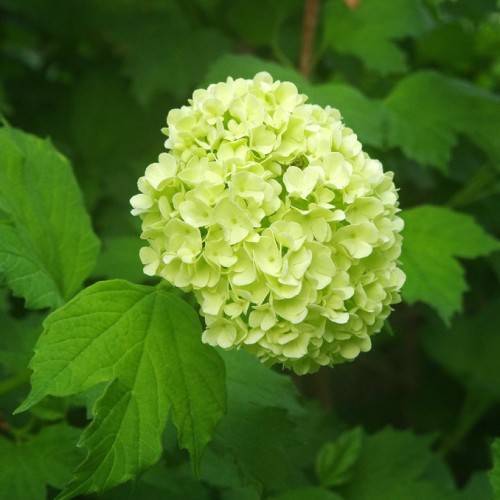
European cranberrybush
Viburnum opulus 'Nanum'
Cycle:
Perennial
Watering:
Frequent
Hardiness Zone:
3 - 8
Flowers:
Flowers In Spring
Sun:
Full sun, Part sun/part shade
Fruits:
Fruits In Summer Ready In Fall
Edible:
Yes
Leaf:
Yes
Growth Rate:
High
Maintenance:
Low
Drought Tolerant:
Yes
Care Level:
Medium
watering
European cranberrybush thrives with consistent watering. During the growing season, water the plant once a week, if needed, with 1 inch of water. This can be done using either a garden hose or a watering can. In extremely hot, dry conditions, more frequent watering may be necessary. During winter, discontinue the weekly irrigations, but in the event of a severe drought during winter months, provide enough water to prevent the roots from drying out.
sunlight
European Cranberrybush should receive 4–6 hours of direct sunlight each day during the growing season. During an especially hot summer, it can benefit from some light shade during the day, however it requires full sun to properly grow and produce vibrant blooms. It is best to provide the plant with sunlight in the morning up until mid-afternoon, before the sun starts to get too harsh.
pruning
When it comes to pruning a European cranberrybush, it’s best to prune lightly in the spring, after the spring blossoms have faded. This type of pruning helps to shape the plant and encourage healthy growth. You should remove any dead stems and trim away any broken or diseased branches. During the summer, prune sparingly to promote flower and fruit production. In the fall and winter, it’s best to prune severely to encourage plant hardiness. Generally speaking, you should prune no more than 1/3 of the plant’s growth in any 1 pruning session.
